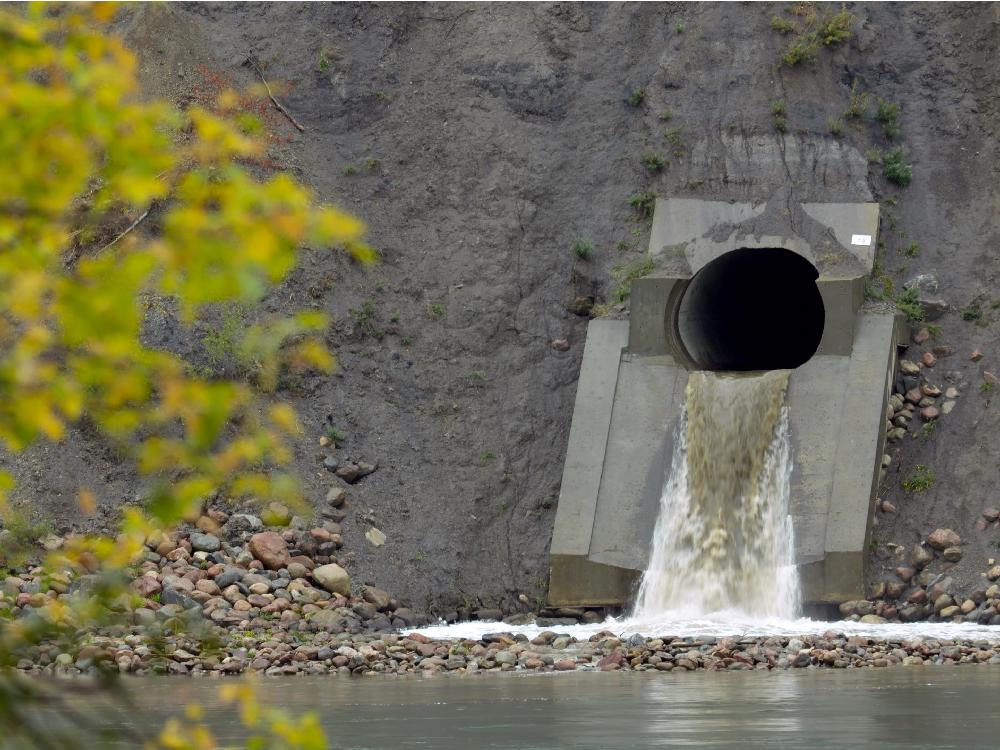From River to Tap: Innovative designs keep dirty water out of river
The small lot for the city of Edmonton’s drainage services department, just 24 stalls, slopes to the middle to send the rain run-off into a specially designed feature called a rain garden.
The soil, a little more than half a metre deep, is a formula of super-absorbent material filled with especially thirsty plants, and houses a small drain pipe at the bottom. When it rains, stormwater runs from the asphalt into the soil, which holds it and filters out pollutants. Eventually, the overflow goes down the drain pipe.
If every parking lot had one of these features, the city could vastly reduce the amount of contaminated stormwater running into the North Saskatchewan River, says Ross Bulat, an environmental engineer in the city’s drainage services department. Keeping dirty water out of the river not only protects the environment, but also means the water is cleaner when it arrives at drinking water treatment plants, thus requiring less work to make it safe.
The rain garden is an example of the “low-impact development” measures that Bulat would like to see become mandatory in new developments in Edmonton. “We are working with the development industry,” he said.
Toronto, for instance, requires office towers above a certain size to have a “green roof,” full of plants.
Edmonton has a few green roofs and some parking lots with new, permeable pavement made of rubber that lets rain water soak through. But much more is needed, says Bulat.
The new development now under construction at Blatchord Field on the former City Centre Airport site near downtown will be the model for the future, according to Mark Hall, the project’s executive director.
It will use a combination of measures to keep a lot of stormwater on-site.
Cisterns will collect rain water off the roofs, run-off from the roads will flow into bioswales (ditches with super-absorbent soils) and wider boulevards will have more trees to absorb rain water. Grassy patches, called “bump-outs” will be built into the street to hold water. Also, special effort will be made during construction not to compact the clay soil, as that inhibits absorption of rain.
Blatchford’s combination of low-impact development measures will give the city its first chance to measure just how much stormwater can be kept on-site, Hall says.
“We’re doing a lot of things together here and we’ll be able to measure how much difference it makes,” he says.
The 217-hectare development will be built out over 20 to 30 years, but the first residents are expected to move in by 2017.

Bulat is keen to see the results of the project for legal reasons.
Under its provincial licence for using the North Saskatchewan, the city has to cap the amount of pollution from stormwater going into the river at 2008 levels, even while the city is growing.
In the long run, the big gains will come by adopting low-impact development strategies to keep the stormwater out of the river — green roofs, rain barrels, and rain gardens to absorb rain water in parking lots will have to become routine.
Bulat thinks the green measures are critical, even if they are a bit more costly for a developer.
A 2014 report prepared by the drainage services department on how to implement the city’s River for Life strategy acknowledges that such measures “may impose costs on external parties, including business owners, the development community, builders and other stakeholders.”
“But it also costs not to do this — it’s a trade-off,” Bulat says.
And there are major benefits — lower drinking water treatment costs, avoiding costly “end of pipe” projects and reduced fines levied by Alberta Environment for allowing too much pollution to get into the river, says the report.
“We will be constantly pushed to do more. The bar is always moving,” says Bulat. “As a city grows, you have to make constant improvements.”
See YOUTUBE video and original article on Edmonton Journal Website.




